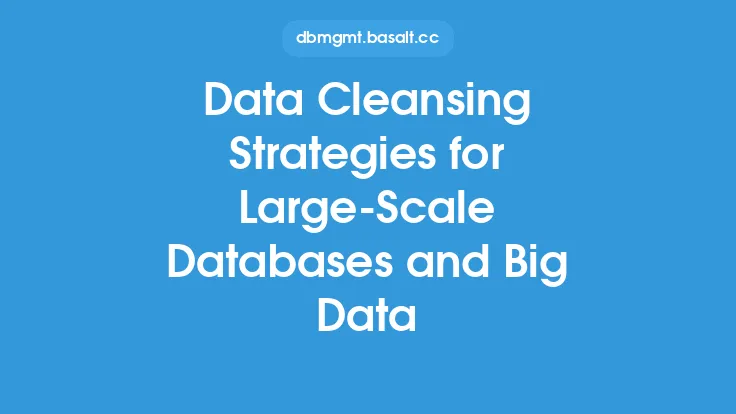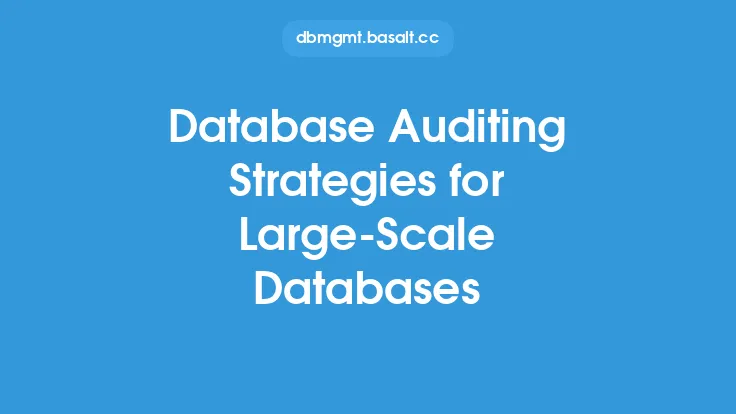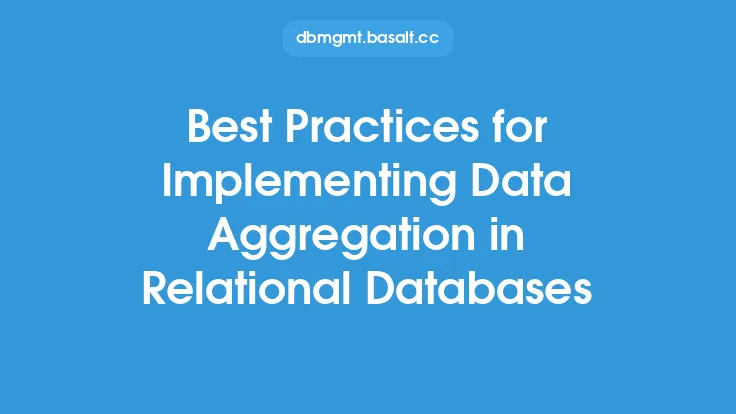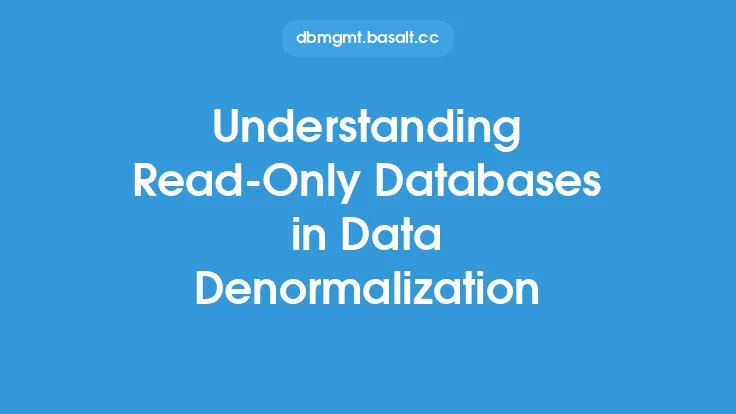When dealing with large-scale databases, one of the most significant challenges is optimizing data aggregation. Data aggregation is the process of gathering and combining data from multiple sources into a single, unified view. This process is crucial for making informed decisions, identifying trends, and gaining insights into the data. However, as the size of the database increases, the complexity of data aggregation also grows, making it essential to optimize the process to ensure efficient and accurate results.
Introduction to Data Aggregation Optimization
Optimizing data aggregation involves improving the performance, scalability, and reliability of the aggregation process. This can be achieved through various techniques, including indexing, caching, and parallel processing. Indexing involves creating data structures that facilitate faster data retrieval, while caching stores frequently accessed data in memory to reduce the number of database queries. Parallel processing, on the other hand, involves dividing the aggregation task into smaller sub-tasks that can be executed concurrently, reducing the overall processing time.
Data Aggregation Techniques
There are several data aggregation techniques that can be used to optimize the process. One of the most common techniques is the use of aggregate functions, such as SUM, AVG, and MAX. These functions allow you to perform calculations on a set of data and return a single value. Another technique is the use of grouping sets, which enable you to group data by one or more columns and perform aggregate calculations on each group. Additionally, techniques like rollup and cube allow you to perform hierarchical aggregations, enabling you to analyze data at multiple levels of granularity.
Database Design Considerations
The design of the database plays a critical role in optimizing data aggregation. A well-designed database should have a clear and consistent schema, with properly normalized tables and indexes. Normalization involves organizing the data into tables to minimize data redundancy and improve data integrity. Indexes, on the other hand, facilitate faster data retrieval and aggregation. Additionally, the database should be designed to handle large volumes of data and scale horizontally to accommodate growing data sets.
Query Optimization
Query optimization is another crucial aspect of optimizing data aggregation. Queries should be written to minimize the amount of data being retrieved and processed. This can be achieved by using efficient join techniques, such as inner joins and subqueries, and by avoiding the use of SELECT \* statements. Additionally, queries should be optimized to take advantage of the database's indexing and caching capabilities. This can be done by using index hints, caching query results, and avoiding the use of functions in the WHERE clause.
Data Partitioning and Distribution
Data partitioning and distribution are essential techniques for optimizing data aggregation in large-scale databases. Data partitioning involves dividing the data into smaller, more manageable chunks, based on a specific criteria, such as date or region. This enables you to perform aggregations on a smaller subset of data, reducing the processing time and improving performance. Data distribution, on the other hand, involves distributing the data across multiple servers or nodes, enabling you to process the data in parallel and improving scalability.
Scalability and Performance Considerations
Scalability and performance are critical considerations when optimizing data aggregation. The aggregation process should be designed to scale horizontally, enabling you to add more nodes or servers as the data grows. This can be achieved by using distributed computing frameworks, such as Hadoop or Spark, which enable you to process large datasets in parallel. Additionally, the aggregation process should be optimized to minimize the amount of data being transferred and processed, reducing the network latency and improving performance.
Best Practices for Optimizing Data Aggregation
There are several best practices that can be followed to optimize data aggregation. One of the most important best practices is to use efficient data structures and algorithms, such as hash tables and sorting algorithms. Additionally, it is essential to use indexing and caching to improve data retrieval and aggregation performance. Another best practice is to use parallel processing and distributed computing frameworks to improve scalability and performance. Finally, it is essential to monitor and analyze the aggregation process, identifying bottlenecks and areas for improvement.
Conclusion
Optimizing data aggregation is a critical aspect of large-scale database management. By using efficient data aggregation techniques, optimizing database design, and leveraging query optimization, data partitioning, and distribution, you can improve the performance, scalability, and reliability of the aggregation process. Additionally, by following best practices, such as using efficient data structures and algorithms, indexing, and caching, you can ensure that your data aggregation process is optimized for large-scale databases. By optimizing data aggregation, you can unlock the full potential of your data, making informed decisions, identifying trends, and gaining insights into your business.





